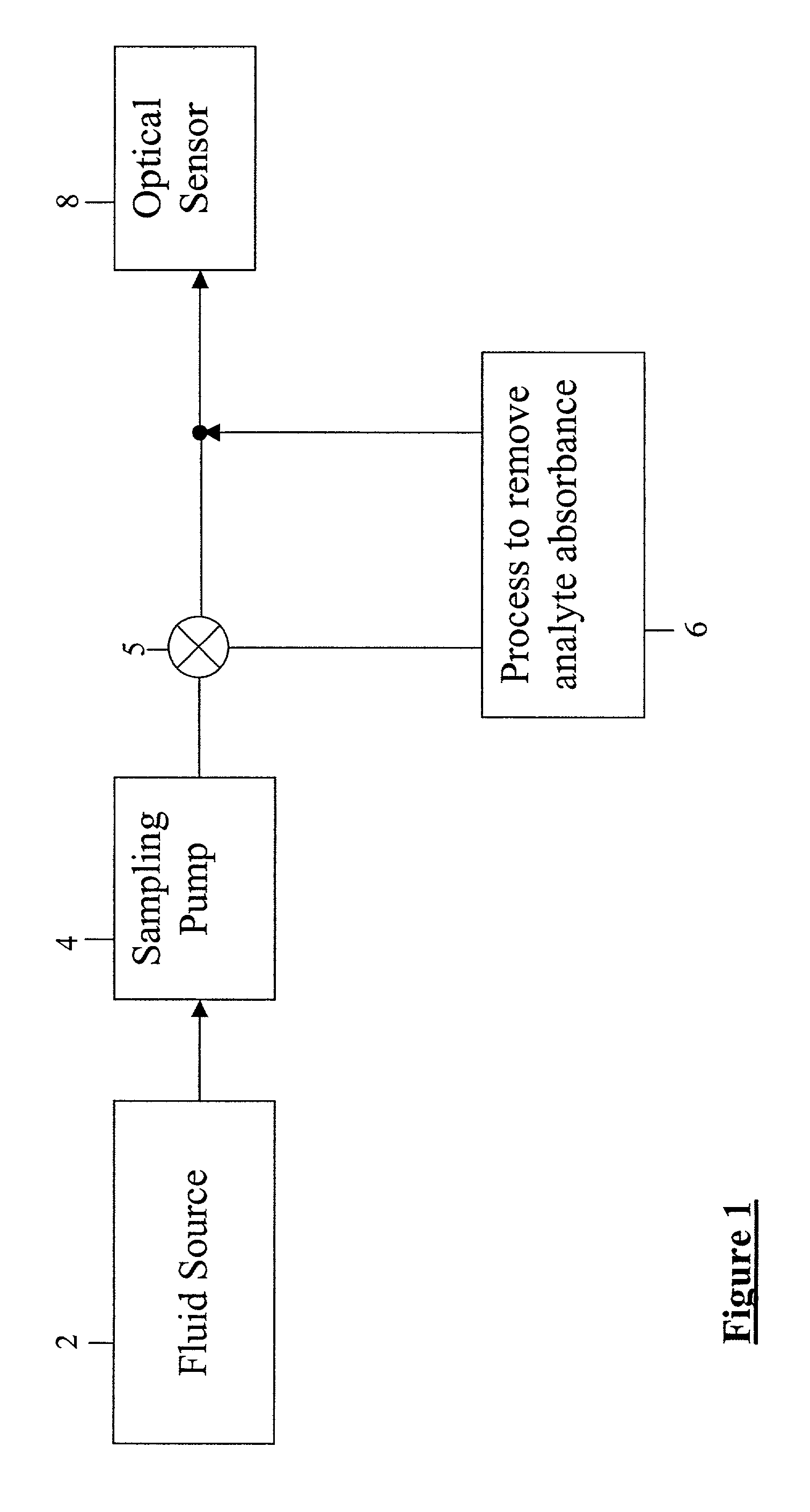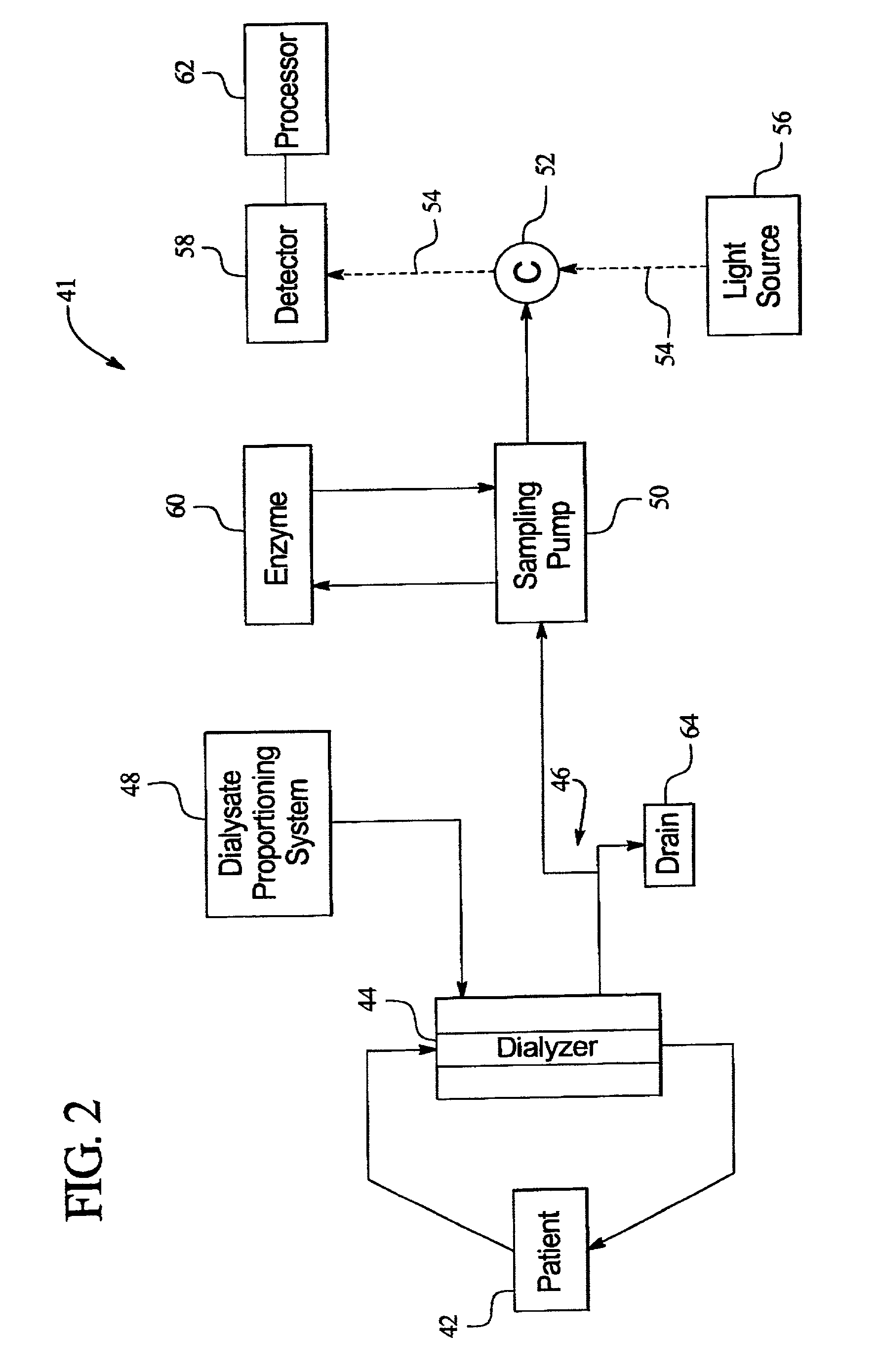Optical sensor and method for measuring concentration of a chemical constituent using its intrinsic optical absorbance
a technology of intrinsic optical absorbance and optical sensor, which is applied in the direction of instruments, biochemical apparatus and processes, and investigating moving fluids/granular solids, etc., can solve the problems of repeated sensor calibration, prone to drift, and invasive electrochemical transduction, and achieve the effect of less ph interferen
- Summary
- Abstract
- Description
- Claims
- Application Information
AI Technical Summary
Benefits of technology
Problems solved by technology
Method used
Image
Examples
Embodiment Construction
[0052]The present invention generally relates to an improved optical sensor and method for measuring the concentration of a chemical constituent using its intrinsic absorbance. More specifically, the invention relates to a system for measuring online the concentration of analytes such as creatinine and urea in fluids such as blood, body secretions, or from clinical therapies e.g. dialysis solution (i.e. dialysate) and a method for using the same. The system measures the creatinine concentration from the disappearance of its intrinsic optical absorbance as a result of enzymatic hydrolysis. Creatinine is present in effluent dialysate along with several uremic retention products, for example, uric acid, uracil, and hippuric acid (Vanholder R et al. The uraemic syndrome, Replacement of renal function by dialysis, Ed. Jacobs C, Kjellstrand C M, Koch K M, 4th Ed., Kluwer Acad. Pub. Pg. 12). The presence of these and other co-absorbing solutes make the optical absorbance measurement of cre...
PUM
| Property | Measurement | Unit |
|---|---|---|
| mass | aaaaa | aaaaa |
| mass | aaaaa | aaaaa |
| mass | aaaaa | aaaaa |
Abstract
Description
Claims
Application Information
 Login to View More
Login to View More - R&D
- Intellectual Property
- Life Sciences
- Materials
- Tech Scout
- Unparalleled Data Quality
- Higher Quality Content
- 60% Fewer Hallucinations
Browse by: Latest US Patents, China's latest patents, Technical Efficacy Thesaurus, Application Domain, Technology Topic, Popular Technical Reports.
© 2025 PatSnap. All rights reserved.Legal|Privacy policy|Modern Slavery Act Transparency Statement|Sitemap|About US| Contact US: help@patsnap.com



